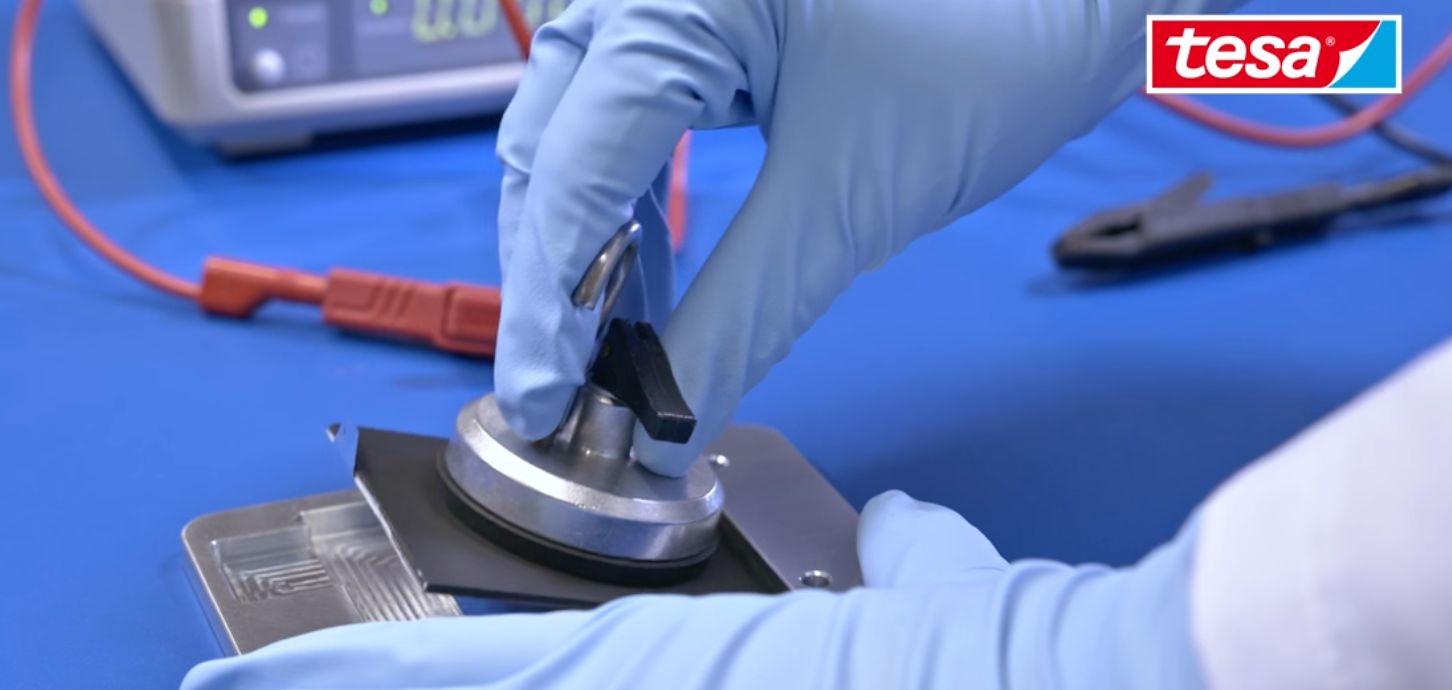As a result of pressure from the European Union to make consumer devices like smartphones more repairable, Apple is being forced to make iPhone batteries user-replaceable by 2027. This has reportedly led Apple to consider using electroadhesion instead of conventional adhesives that require heat, isopropyl alcohol, violence, or all of the above to release. While details are sparse, it seems the general idea would be for the battery to be encased in metal, which, together with the metal casing interior, would allow for the creation of a cationic/anionic pair capable of permanent adhesion with the application of a low-voltage direct current.
This is not a completely crazy idea. Tesa has already marketed it in the form of an electric takeoff of its Disunion on demand product. This uses a tape that is applied to one side of the (metallic) surfaces, with a pressure of 5 bar for 5 seconds. Afterwards, the two parts can be released again without leaving any residue as shown in the image above. This involves applying a voltage of 12V DC for 60 seconds and then removing the two parts without force.
Tesa markets it alongside the pull-tab adhesive strips that are currently all the rage on smartphones, and opinions on the strips during battery replacement are very divided. It’s always good to have a bottle of IPA nearby when a pull-tab inevitably breaks and the battery has to be released. In that sense, electro-adhesion for peeling off would make life a lot easier, as the days when batteries were not a structural part of smartphones are unlikely to return, much as we miss them.
We’ve talked about electroadhesion before, as almost anything can be made to stick to anything, including biological tissues, graphite, and metal, with potentially interesting applications in robotics and medicine.
